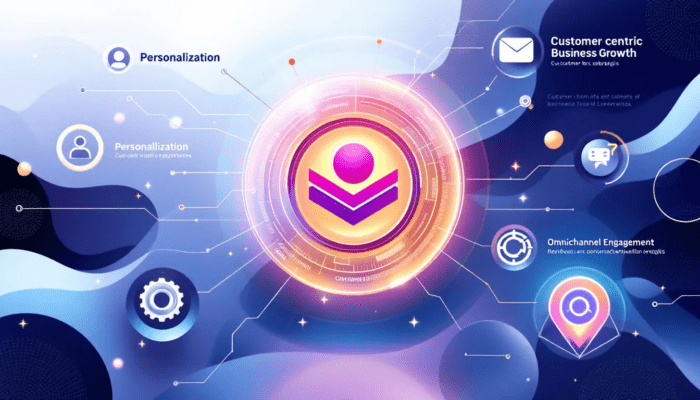Need a strategy to boost your business growth? This guide dives into effective marketing strategies for growth, detailing how to attract new customers and keep them coming back. Expect insights on growth marketing concepts, full-funnel content, and SEO to ensure your marketing strategy for growth flourishes.
Key Takeaways
- Growth marketing emphasizes a comprehensive, data-driven customer acquisition and retention strategy to drive long-term business growth.
- Key components of effective growth marketing include full-funnel content marketing, innovative SEO practices, and hyper-personalization techniques that engage customers throughout their journey.
- Data-driven decision-making, continuous monitoring, and iterative improvements are essential for optimizing marketing strategies and adapting to evolving customer needs.
Understanding Growth Marketing

Growth marketing is a strategic plan focused on acquiring and retaining customers who become brand advocates. Unlike traditional marketing, which often prioritizes immediate sales, growth marketing focuses on a holistic, data-driven approach to guide strategies across the customer journey, from awareness to advocacy.
Growth marketing collects insights from multiple departments to build long-term customer relationships, prioritizing satisfaction and loyalty over short-term gains. This comprehensive approach ensures that marketing efforts are aligned with the evolving needs and preferences of the target audience, ultimately driving business growth.
Critical Components of an Effective Growth Marketing Strategy
A strong growth marketing strategy focuses on formulating deeper relationships with the target audience, ultimately driving increased revenue. Defining a budget and utilizing multiple channels is critical to maximizing reach and impact.
Effective growth marketing strategies incorporate several vital components, including full-funnel content marketing, innovative SEO, and hyper-personalization techniques. These elements work together to engage customers at various stages of their journey, ensuring a cohesive and targeted approach to marketing.
Full-Funnel Content Marketing
Approximately 70% of B2C marketers utilize content marketing, indicating its significant role in successful marketing strategies. Full-funnel content marketing addresses various customer journey stages, ensuring effective conversion. Creating resources for every customer segment and offering value-driven content builds trust and drives traffic to convert leads.
Effective tactics include well-designed landing pages that capture user attention and drive conversions, blog posts that direct traffic to product or service pages, and product-led content that educates users about relevant topics while demonstrating how to use the product effectively.
Continually evaluating and adapting content strategies ensures they remain aligned with customer needs.
Innovative Search Engine Optimization (SEO)
SEO is crucial for improving online visibility and SERP rankings, which engage and attract leads. Effective SEO practices include thorough keyword research, a focus on user experience, and new search strategies.
Adapting content for voice search by using natural language keywords and incorporating helpful resources like FAQ pages can significantly improve rankings. Staying up-to-date with SEO trends and continuously refining strategies enhances online presence and drives sustainable growth.
Hyper-Personalization Techniques
Hyper-personalization is a vital tool for customer acquisition and retention. By targeting audiences based on data analytics and personal interests, personalization enhances marketing efforts and drives user engagement.
Understanding customer interests, preferences, experience, demographics, and transaction history is key to creating personalized marketing campaigns.
Customer-Centric Strategies for Growth

Growth marketing involves continuously refining products and marketing strategies using customer feedback. Detailed buyer personas help marketers tailor strategies to meet the needs and preferences of their target audience.
Effective growth marketing hinges on understanding customer journeys and tailoring experiences accordingly. Focusing on customer retention and leveraging cross-departmental collaboration creates a cohesive user experience that enhances satisfaction and drives long-term growth.
Leveraging Customer Psychology
FOMO (Fear of Missing Out) is a psychological tactic companies use to influence customer purchasing decisions. Strategies to implement FOMO in marketing campaigns include dynamic alerts for purchases, limited-time sales, and discounts.
Companies like Booking.com and Amazon create urgency by showing availability and stock levels, leveraging customer psychology to enhance engagement. Creating a sense of exclusivity can significantly influence customer decisions and foster loyalty.
Re-Engagement Campaigns
The retention stage in growth marketing aims to retain existing customers and strengthen loyalty. Re-engagement email marketing campaigns are designed to return inactive users, utilizing behavioral segmentation to reduce churn rates.
Tools like Userpilot track engagement and segment inactive users, while Canva encourages customer retention through weekly tips and design challenges. Consistently engaging with helpful content, offers, and support is key to retaining customers.
Empowering Existing Customers
Designing personalized onboarding flows that guide users along happy paths to activation can significantly enhance customer satisfaction. Providing users with self-service options fosters independence and can lead to greater customer satisfaction.
Loyalty programs and social proof are effective tools for retaining customers. Offering personalized experiences and empowering existing customers drives retention and long-term growth.
Utilizing Referral Programs for Growth

Referral programs can significantly enhance word-of-mouth marketing by providing customers with a structured way to share their positive experiences. Customers referred to a business tend to be more loyal and engaged than those acquired through traditional marketing.
Implementing a referral program allows businesses to turn satisfied customers into effective advocates, amplifying their marketing efforts at a lower cost. Offering double-sided rewards, where both the referrer and the new customer benefit, can enhance participation rates and drive significant business growth.
Cross-Channel Marketing Strategies

Cross-channel marketing is essential for enhancing customer engagement through multiple communication channels. Businesses can maximize their reach and impact by utilizing various channels, such as SMS, push notifications, in-app messages, social media, and direct email.
Data analytics and insights are crucial for effectively mapping the customer journey in cross-channel marketing. To maintain growth and retain customers, businesses must focus on solving problems critical to their target audience.
Social Media Marketing
Social media marketing is crucial for growth marketing because consumers expect a solid social media presence, which allows brands to reach a large audience. Companies like Airbnb utilize their social media platforms by catering content to the unique types of each platform.
Nasty Gal evolved from an eBay store to a $100 million revenue business using social platforms and focused brand positioning. Effectively leveraging social media channels enhances brand visibility and customer engagement.
Email Marketing
Hyper-personalized email campaigns are essential for creating meaningful communication with customers. These campaigns can include onboarding emails, feature announcements, and feedback requests, all tailored to individual user preferences and behaviors.
Tools like Userpilot offer integration with email and analytics tools, streamlining email marketing efforts and enhancing customer engagement. Personalized email marketing drives user engagement and retention effectively.
Product-Led Growth Strategies
Product-led growth focuses on leveraging the product as the primary user acquisition and retention driver. This approach nurtures organic growth and supports data-driven decisions to refine and optimize the product.
Successful product-led growth strategies often include freemium models, free trials, and effective communication of new features. These elements combine to attract new users and retain existing ones by continuously demonstrating product value.
Freemium and Free Trials
Freemium plans and free trials allow users to experience the product value before committing to a paid plan. Freemium offerings let users engage with the product indefinitely, while free trials provide full product access for a limited time.
Slack achieved rapid growth during its beta phase by offering a freemium model, which garnered 8,000 signups in 24 hours and 15,000 in two weeks. Gathering user feedback after initial signups helped Slack refine its product and enhance the user experience.
Announcing New Features
Utilize contextual in-app patterns, such as tooltips or hotspots, to effectively announce new features. This approach ensures that users are non-intrusively informed about new functionalities.
Announcing new features through multiple communication channels, including in-app messages, social media, and newsletters, helps maximize user retention and engagement. Keeping users informed about new features is crucial for reducing churn and enhancing overall product success.
Data-Driven Decision Making
Data-driven decision-making is a cornerstone of growth marketing, allowing for informed adjustments to marketing strategies. By leveraging data, growth marketers can identify areas for improvement and optimize programs to align with evolving customer needs.
The subsections will cover defining metrics for success and continuous monitoring and iteration, which are essential for maintaining effective and relevant marketing campaigns.
Defining Metrics for Success
A growth marketing strategy focuses on user engagement across all customer journey stages. Key metrics to analyze include retention rate, churn rate, and daily active users to effectively gauge the success of marketing efforts.
The AARRR framework represents the stages of customer engagement: Acquisition, Activation, Retention, Revenue, and Referral. Monitoring customer satisfaction metrics and customer lifetime value (CLV) is crucial for assessing the long-term profitability of marketing initiatives.
Continuous Monitoring and Iteration
Iterative improvement ensures marketing campaigns stay relevant and effective as market conditions change. A/B tests help optimize microcopy and in-app message design, providing data-driven insights to improve marketing efforts.
Monitoring and iteration of marketing strategies help businesses adapt to new trends and customer behaviors, ensuring sustained growth and engagement.
Summary
In summary, effective growth marketing strategies encompass a range of tactics aimed at acquiring, retaining, and engaging customers. From full-funnel content marketing and innovative SEO to hyper-personalization techniques and data-driven decision-making, these strategies are designed to build long-term customer relationships and drive sustainable growth.
Businesses can achieve significant growth and success by leveraging customer-centric strategies, utilizing referral programs, and adopting cross-channel marketing approaches. Implementing these proven tactics will enhance customer satisfaction and ensure continuous business expansion.

Frequently Asked Questions About Growth Marketing Strategies
What is growth marketing, and how does it differ from traditional marketing?
Growth marketing emphasizes acquiring and retaining customers through a holistic, data-driven approach. It prioritizes long-term relationships and brand loyalty rather than just immediate sales, which sets it apart from traditional marketing strategies.
What are the critical components of an effective growth marketing strategy?
An effective growth marketing strategy hinges on full-funnel content marketing, innovative SEO, hyper-personalization, customer-centric approaches, and data-driven decision-making. Implementing these components can significantly enhance your marketing efforts and drive sustained growth.
How can businesses effectively use referral programs for growth?
Businesses can effectively use referral programs for growth by implementing double-sided rewards incentivizing the referrer and the referred. This structured approach enhances word-of-mouth marketing, encouraging satisfied customers to share their positive experiences.
Why is data-driven decision-making critical in growth marketing?
Data-driven decision-making is crucial in growth marketing. It enables marketers to make informed adjustments to strategies, optimize programs to better align with customer needs, and drive sustained growth. This approach ensures that marketing efforts are effective and responsive to changes in the market.
Can you provide examples of successful growth marketing strategies?
Companies like Spotify, WhatsApp, Uber, and Canva exemplify successful growth marketing strategies. These companies have achieved remarkable business expansion and user engagement through innovative tactics, highlighting the effectiveness of leveraging data-driven insights and user-centric approaches to drive growth.

Ready to Implement Growth Marketing?
The right growth marketing strategy can unlock new levels of success. Whether you want to attract more customers, boost revenue, or strengthen your brand’s presence, we’re here to help you take strategic steps.
- Explore More on Growth Marketing: Discover additional resources and insights.
- Get Expert Support: Connect with us to discuss custom strategies that align with your goals.
Start Your Growth Journey Today
🔗 Contact Us
🔗 Schedule a Consultation
About the author
Mark A. Hope is the co-founder and Partner at Asymmetric Marketing, an innovative agency dedicated to creating high-performance sales and marketing systems, campaigns, processes, and strategies tailored for small businesses. With extensive experience spanning various industries, Asymmetric Marketing excels in delivering customized solutions that drive growth and success. If you’re looking to implement the strategies discussed in this article or need expert guidance on enhancing your marketing efforts, Mark is here to help. Contact him at 608-410-4450 or via email at mark.hope@asymmetric.pro.

